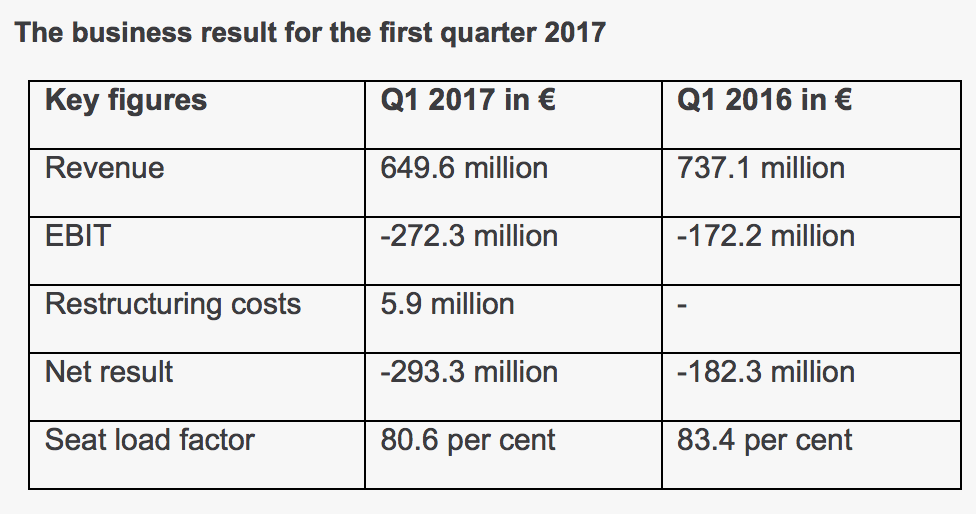
The first quarter 2017 is dominated further by the challenging structure of the old airberlin business model. Other external factors have had a negative impact including a ground staff strike at Berlin Tegel Airport and operational limitations of the airline’s new ground service provider, which led to flight cancellations and reductions in capacity.
Outlook and progress in the restructuring process
Mr Winkelmann said: "We have a lot of work ahead of us in 2017. Due to the infrastructure limits in Berlin we will focus more strongly on Düsseldorf with our plans to expand further our long-haul route network. The restructuring process of airberlin is up and running and we will now accelerate our pace of change towards the positioning of new airberlin".
The strategic turnaround for the new airberlin was initiated at the end of 2016. Since then the airline has achieved major progress in three important fields:
Concentration of its route network on flights within Germany, to major European cities and to more long-haul destinations. airberlin from May 2017 will offer even more connections to the USA. Furthermore, airberlin has adapted its network to the new fleet target size of 75 aircraft and downsized its flight network from 387 to less than 100 routes. The fleet harmonisation to Airbus aircraft has been completed.
A wet-lease agreement with Lufthansa Group for 38 aircraft has developed successfully and 35 aircraft have been moved to date.
· A separation from the ‘sun-seeking’ seasonal tourism business started at the beginning of the airline summer season in March and a total of 35 leisure-dedicated aircraft were transferred to NIKI. The second stage is now pending regulatory approval of a joint venture between Etihad, NIKI and TUI.
